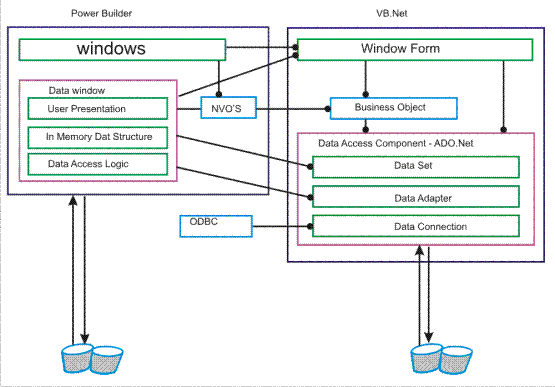Visual Basic .NET (VB.NET) is an object-oriented programming language that can be considered as an evolution of the classic Visual Basic (VB) which is implemented on the .NET Framework. Visual Basic .Net was developed to make Web services applications easier to develop.
According to Microsoft, VB .NET was reengineered, rather than released as VB 6.0 with added features, to facilitate making fundamental changes to the language. VB.NET is the first fully object-oriented programming (OOP) version of Visual Basic, and as such, supports OOP concepts such as abstraction, inheritance, polymorphism, and aggregation.
Visual Basic .NET was released alongside Visual C# and ASP.NET in 2002.Visual Basic .NET should be considered as just another version of Visual Basic 6.0.Microsoft supplies an automated VB6-to-VB.NET converter with Visual Studio .NET, which has improved over time, but it cannot convert all code, and almost all non-trivial programs will need some manual effort to compile.
Most will need a significant level of code refectory to work optimally. Visual Basic programs that are mainly algorithmic in nature can be migrated with few difficulties.
| Version | Date |
| Visual Basic .NET (VB 7) | February 2002 |
| Visual Basic .NET 2003 (VB 7.1) | 2003 |
| Visual Basic 2005 (VB 8.0) | 2005 |
| Visual Basic 2008 (VB 9.0) | 19 November 2007 |
| Visual Basic 2010 (VB 10.0) | April 2010 |
- Fully object oriented programming.
- Designed to .NET Framework.
- Structured error handling capabilities.
- Inherent support for XML & Web Services.
- Better windows applications with Windows Forms.
- Console capabilities of VB.NET.
- Web capabilities with Web Forms.
- Better database programming approach with ADO. NET.
- Interpretability with other .NET complied languages.
- Immense power of tools & controls (including Server Controls).

VB.NET provides managed code execution that runs under the Common Language Runtime (CLR), resulting in robust, stable and secure applications. All features of the .NET framework are readily available in VB.NET
VB.NET uses XML to transfer data between the various layers in the DNA Architecture i.e- data are passed as simple text strings.
- Powerful Windows-based Applications.
- Building Web-based Applications.
- Simplified Deployment.
- Powerful, Flexible, Simplified Data Access.
- Improved Coding.
- Direct Access to the Platform.
- Full Object-Oriented Constructs.
- XML Web Services.
- Mobile Applications.
- COM Interoperability.
- Reuse Existing Investments.
- Upgrade Wizard
- Cannot handle pointers directly
- Large Talent Pool
- Intermediate Language (IL) compilation
- Just-In-Time (JIT) compiler
- Large Libraries
